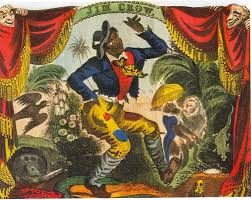The American Story is not an easy one to tell. As Americans, we have superb war stories, we have stories of major sporting events, and we have the stories that will haunt us forever. I speak of course of the treatment of African Americans during times of civil unrest in the United States of America.
The South, post Civil War, was filled with uncertainty. After the additions of the thirteenth, fourteenth, and fifteenth amendments, African Americans were given basic civil rights equal to their fellow white Americans. There seemed to be an extreme power shift. No longer were they slaves. As much as this would seems like progress, when we look deeper and analyze the situation, we notice that this was perhaps just a shimmy forward.
During a brief time known as Presidential Reconstruction, the South was allowed to go back to their old ways of bigotry. One of their first attempts was the creation of a new set of anti-freedmen laws known as the Black Codes. These Black Codes were an early attempt at being able to control the lives of the newly freed African American population in the South. Though these laws did grant some basic rights, such as the right to marry and land ownership, they refused certain rights like the right to testify against a white person in court, the right to serve in state militias, and (before the ratification of the fifteenth amendment) the right to vote.1
These Black Codes faced a temporary setback in the years 1867-1877, a period now known as Radical Reconstruction, where northern Republican politicians attempted to force the former Confederate States to integrate their Freedmen populations into Southern society. In 1877, those earlier Black Codes found new life with an even harsher set of laws. The Black Codes gave way to a new wave of discrimination called the Jim Crow Laws, named after a fictional character who misrepresented African-Americans as unintelligent human beings.2 These Jim Crow Laws hit African Americans in all places. For voting, most southern states placed poll taxes and literacy tests that didn’t explicitly disadvantage African Americans, but ended up doing so. A more direct attack was the segregation of almost everything. Pools, water fountains, restrooms, movie theaters, and even park benches were labeled as White Only or Colored Only. There were major consequences for ignoring or violating these laws.3 The new set of Jim Crow laws were legitimized by none other than the Supreme Court. In 1896, the decision of Plessy vs. Ferguson, the Supreme Court case based on a similar event to that of Rosa Parks years later, declared that the “Separate, but Equal” clauses that some states used, such as Louisiana, did not violate the Fourteenth Amendment. After the seven to one vote passed, Southern politicians began to double down and become harsher now that law was fully on their side.4

But these legal forms of social control were reinforced by a number of extra-legal forms, namely lynching. Lynching is a form of vigilante justice where extralegal means are used on individuals by taking the law into one’s own hands to inflict physical punishment or even death upon another person.5
Until 1850, most acts of lynching in the United States were non-lethal.5 During the American Revolutionary War, patriots would seize and destroy any opposing loyalist’s shop and burn it to the ground or seize the persons themselves and proceed to tar and feather them. The use of lynching was just a form of intimidation. Even before the Civil War, lynchings of African Americans were physical beat downs, but rarely was someone killed. The modern sense of lynching wasn’t used until the eve of the Civil War as Southerners began to use such methods to put down slave insurrections. After the Civil War, lynching evolved into the lethal forms of torture, burning, shootings, and, most notably, hanging.
According to the Tuskegee Institute, from the year 1882 to 1968 there were 4,743 lynchings reported across the United States, where 3, 446 or 73% of those lynched were African Americans.7 The most important thing to note from these statistics is that those lynched were people, not merely numbers on a page.
One notable lynching story is that of the young Emmett Till in 1955. Emmett Till was a fourteen year old boy from Chicago, Illinois who decided to go on a trip to Mississippi to visit some of his family.8 A fact that we know now is that over five hundred and eighty-one people were lynched in Mississippi, the highest of any other state in the Union.9 In a documentary titled “The Murder of Emmett Till,” Mamie Till, Emmett’s mother, warned him:
“… Mississippi is not Chicago. And when you go to Mississippi, you’re living by an entirely different set of rules. Ah, it is, ‘yes, ma’am’ and ‘no, ma’am’, ‘yes, sir’ and ‘no, sir’… And, Beau, if you see a white woman coming down the street, you get off the sidewalk and drop your head. Don’t even look at her.”10
Though she explained that she was exaggerating, what she feared for her son was what sadly occurred. While in Mississippi, Till–along with some cousins and friends–entered a shop run by Carolyn Bryant, a white woman. Reports vary about the specifics, but according to Bryant, Till made inappropriate remarks, whistled at her, and even said “Bye, Baby” as he left. After telling her husband, Roy Bryant, of the situation with Till in the store, Bryant and his brother-in-law J.W. Milam left in anger. The two abducted Till in the night from his relative’s home, beat him senseless and shot Till. They then tied pieces of metal to his body and threw the fourteen-year-old boy into the Tallahatchie River.11

Three days passed before the body was found by young boys fishing in the river. Roy Bryant and J.W. Milam were acquitted of their crime.12 The injustice of this crime soon shot all around the country. Though most African Americans saw the passing of Brown vs. Board of Education in 1954, which declared that separate but equal was unconstitutional, as a major step forward, people began to look farther and see that the United States still had a long way to go for equality.

The murder of Emmett Till was the true catalyst of the Civil Rights Movement. At the funeral for the young Till, his mother invited a photographer for Jet Magazine, a magazine for African Americans. The picture taken, to the right, was published and people everywhere were now able to see this monstrous act. Rosa Parks, the brave woman who most historians give credit for the beginning of the Civil Rights Movement, claimed that her knowledge of Emmett Till’s death and along with others, was one of the reasons for why she stood her ground on that bus in December of 1955.13
It would take many more years and many arrests for yet many more murders until the African American community felt safe from this type of vigilante violence. After Till, boycotts and marches become prominent in the South. One Reverend Dr. Martin Luther King Jr. began to rise from the ashes of the earlier lynchings and began to use his voice to speak out against these lynchings and violence, and lead against all the negative things that African Americans faced in the South. The NAACP (National Association for Advancement of Colored People) and other freedom fighting organizations partnered up and began to protest for African Americans rights. In 1957, the Civil Rights Act of 1957 was passed, yet this didn’t advance the lives of African Americans as much as it should have. More marches and people lost to senseless violence brought more civil rights acts such as the Civil Rights Acts of 1960, 1964, 1968, and 1991.14
History will go on, as historians it is our duty to record these brutal events and write down these statistics. As we write down these numbers and put our pens to paper and report, we must not forget that those lost are not just letters lost in a book or numbers typed into neat little columns. These people are the true victims and we must not forget. Learn your history, and know your truth.
- Eric Foner, Give Me Liberty!: An American History. Volume 2 (New York: W.W. Norton & Company, 2016), 180. ↵
- Salem Press Biographical Encyclopedia, January 21016, s.v. “Jim Crow in the U.S South,” by David M. Brown. ↵
- Salem Press Biographical Encyclopedia, January 2016, s.v. “Jim Crow Laws,” by William Moore. ↵
- Salem Press Biographical Encyclopedia, September 2015, s.v. “Separate, but Equal Doctrine and the Supreme Court,” by Pamela Haldeman. ↵
- Salem Press Biographical Encyclopedia, December 2015, s.v. “Lynching,” by Darryl Paulson. ↵
- Salem Press Biographical Encyclopedia, December 2015, s.v. “Lynching,” by Darryl Paulson. ↵
- “Lynching Statistics,” Journal of the American Institute of Criminal Law and Criminology 9, no. 1 (1973): 144–46. ↵
- Salem Press Biographical Encyclopedia, January 2016, s.v. “Emmett Till,” by Catherine R. Squires. ↵
- “Lynching Statistics,” Journal of the American Institute of Criminal Law and Criminology 9, no. 1 (1973): 144–46. ↵
- The Murder of Emmett Till, directed by Stacey Nelson (Arlington: PBS, 2003). ↵
- The Murder of Emmett Till, directed by Stacey Nelson (Arlington: PBS, 2003). ↵
- Salem Press Biographical Encyclopedia, January 2016, s.v “Emmett Till,” by Catherine R. Squires. ↵
- Eyes on the Prize , directed by Madison Davis Lacy, Jr. (Mississippi: PBS, 2006). ↵
- Salem Press Biographical Encyclopedia, March 2016, s.v. “Civil Rights Movement in the 1950’s,” by Carl Bankston. ↵



42 comments
Ruben Basaldu
I am glad that we are moving in the right direction compared to what life was back in the day. Everyone regardless of color deserves to be treated with respect. It is really upsetting to think that there was a time in which it was like this and there was segregation. What happened to Emmett Till was unjust and the people responsible so have dealt with the consequences of their crime. However, it was a different time with different people who thought different. As I said I am glad times have changed for the better.
Bianca-Rhae Jacquez
African American in the post civil war ear and years after were treated extremely horribly. NO one deserves to be tracked down and beaten to death based soley on the color of their skin. Emit Till could’ve had an amazing future ahead for him but his life was ripped away from him. Thankfully the times have changed that things like this aren’t acceptable anymore.
Christopher Hohman
Nice article. African Americans in the post civil war period and for a hundred years afterwards faced such a difficult situation. To think that they could be tracked down and killed for doing something like whistling at a white woman is just terrible. Poor Emit Till he had his whole life stolen from him because of the hatred others felt for him, but that he himself could not understand.
Christopher Metta Bexar
The comments here tend to overlook at least one thing. Not to say that the murder of Emmett Till was justified.
According to the article he clearly stepped over the line of acceptable behavior for any male ( caucasian or african) of any age ( 14 or 70) in the south of the 1950s and 60s.
There is no way any southern gentleman would put up with that kind of affront to his wife or family member.That is still true in many parts of the south, no matter what the color of the offender , he’s gonna pay a price for insulting a lady.
Roberto Tijerina
Hello Christopher, i would recommended reading some more material on the matter. Carolyn Bryant, the woman who claimed she was whistled at, later came out and said that she lied about the while situation. I understand your remarks about how inappropriate whistling at a woman is. Its a sign of sexual harassment, but Emmett Till was murdered over a lie.
Uzziyah Cohen
This article infuriated me on so many levels, not because of the quality of the writing but mostly because of the subject matter itself. I have heard the story of the murder of Emmett Till several times in my life, and I have read numerous articles regarding the story. However the thing that alarmed me about this article was that it was published in March 2017, and the woman that accused Emmitt Till of sexually harassing her, Carolyn Bryant, confessed that she lied. After 62 years, Carolyn Bryant admitted that she lied in January 2017. The Jim Crow laws and the black codes of parts of history that every African-American is aware of, and continuously reminded of by things present even in society today. I would love to say that racism no longer exists; however, it is alive and well.
Leeza Cordova
The story of Emmitt Till is one that has been heard everywhere, yet it is still very sad and tragic what happened just due to the fact of race. It is crazy to think that many people in the world supported and saw nothing wrong with these acts of killing African Americans and saw themselves as the dominant race. This article was very descriptive and hit all the major points of racism and how long it took for things to be just for EVERYONE.
Samire Adam
This article was very riveting to read at times. I cannot fathom the fact that our country was one of the last to outlaw slavery. Not only that, but our country also decided a step forward from slavery was enacting Jim Crow Laws so that our people may never be united. The story and timeline of the death of Emmett Till is heartbreaking to read about because it presented a powerful display of what Jim Crow could do to the youth.
Gabriela Murillo Diaz
This article shed light on the impact that Jim Crow laws had on citizens during those times. Its crazy to think that discrimination was so present before. I believe that people fail to see that there is a new form of Jim Crow laws present in modern society. There is still discrimination and institutional racism present, but it is not as obviously seen as it was before. Now it is present in the criminal system. I think we still have a lot to learn from our history.
Arieana Martinez
I have mainly heard about Jim Crow laws from reading “The Help” and was always intrigued how people could have complete systems of oppression and abuse of people of color. The road to freedom from people who are constantly trying to drag them down, is truly inspiring and it is important to talk about occurrences like the one’s mentioned in the article so we can learn from our past and make sure they never happen again.
Madison Downing
This was such a chilling article to read! It’s terrible the treatment that African Americans and other colored races had to endure before finally getting some forms of respect, even though there are still many struggles. What happened to Emmett Till is terrible and because of your writing I am definitely going to look into his story and find out what happened to the men who did this to him. That just breaks my heart so much but because of him we have gotten farther with human rights than ever before, so thank you Mr. Till and this article was fantastic.